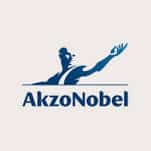Aim:
A client, active on the domestic market for supplying home energy, needed to get insight in their potential customer database as well as in their current and former customers. The market is very agile and each year many consumers change their energy supplier.
The aim was to be able to identify specific customer groups with their specific needs and beliefs, which might be accurately addressed (using persona’s) by our client. An additional goal was evaluate the effectiveness of “win-back” strategies used by the client. Is the money invested in securing returning customers an investment that has long term payback?

Important marketing questions:
• What are relevant and actionable consumer segments based on consumer attitude, use and consumption levels of energy?
• What is the need for, the potential and value of specific consumer propositions within the market?
• How to tailor products/ service and its marketing towards specific consumer needs in order to retain customers and/or turn them into loyal customers over time?
• Do regained customers represent any extended value over time? Is segmentation based on prior customer behaviour a prediction for success or failure?
Approach:
• We applied a combination of qualitative techniques (8 group discussions and 20 in-depth interviews) as well as an online segmentation study among a customer base of 1500 individuals.
• The results of the segmentation were transformed into actionable persona’s, which were in detail discussed and refined with sales and service staff of the client before finally applying them.

Results:
• We found 3 main segments of current customers with a different behaviour towards energy and within each main segment we identified 2 sub segments based on attitudinal factors.
• We were able to form actionable, recognizable person’s that were incorporated in the customer offerings and customer care.
• Past customer behaviour is a major indicator of future behaviour – in particular, prior complaints, service downtime and recovery experiences and attitudes to referral all are major pointers in identifying valuable customers for re-acquisition – and those targets to be avoided.
• There was little point in targeting a lost customer who defected over serious service sub-performance issues in the past or who defected to a competitor primarily because they were offering lower prices. The longer the duration of the defection period the less likely was re-acquisition to be successful.


























